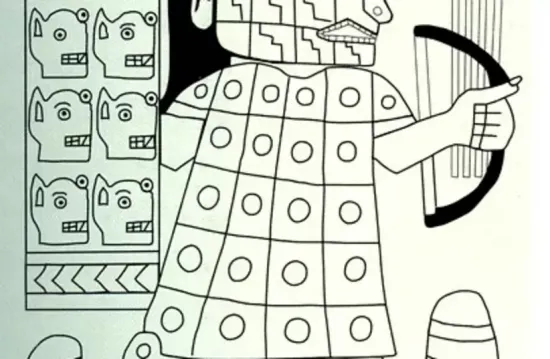Source - https://www.jpost.com/archaeology/article-692346
A study shows that the ancient Wari people used to mix special berries, known for their hallucinogenic properties, with a popular alcoholic drink.
 Chicha served at the yearly "Fiesta del Huán", winter solstice ceremony awaiting the rising Sun (Sué) in Muisca and various other indigenous traditions (photo credit: VIA WIKIMEDIA COMMONS)
Chicha served at the yearly "Fiesta del Huán", winter solstice ceremony awaiting the rising Sun (Sué) in Muisca and various other indigenous traditions (photo credit: VIA WIKIMEDIA COMMONS)
Politicians in Ancient Peru may have mixed a hallucinogenic concoction for consumption at parties and summits with neighboring political dignitaries, a new study has found.
The study, which was published in the peer-reviewed archeological journal Antiquity on Wednesday, outlined how a recent archaeological study in Southern Peru showed that the ancient Wari people, who lived in the country from 600-1000 AD, used to mix special berries known for their hallucinogenic properties with a popular alcoholic drink – which was then served to visiting political representatives as a means to foster ties.
The Waris would mix the hallucinogenic “Vilca” berry with their traditional maize-based “chicha” beverage, according to the researchers’ discovery of psychotropic plant remains in a Wari “chicha brewery.”
“The importance of Wari feasting, especially in forging hierarchical ties within and between groups, is well documented,” the researchers wrote. “A host who provides alcohol and food to guests reinforces patron-client relationships, forging an indebtedness that confirms the heightened position of the hosts.”
While researchers did not find evidence of direct consumption of this alcoholic/hallucinogenic cocktail, the presence of the ingredients beside each other in a facility where these beverages were made leads researchers to believe that the only logical conclusion is that they were ingested together during special occasions.
 Illustration of an archer from the Wari people, who ruled Peru from 500-1000 AD. (credit: VIA WIKIMEDIA COMMONS)
Illustration of an archer from the Wari people, who ruled Peru from 500-1000 AD. (credit: VIA WIKIMEDIA COMMONS)
“The considerable effort required to obtain the hallucinogen suggests that the use of Vilca to access the supernatural through-altered states of consciousness was an important part of the Wari political economy,” the study’s authors declared.
Not all experts are convinced that the archaeological find is sufficient evidence of the drink’s consumption, as curator Ryan Williams of the Field Museum in Chicago, who has excavated the ruins of a Wari ceremonial center at Cerro Baúl in Peru, told National Geographic in an email.
The hypothesis is “intriguing,” Williams says, though he believes that the evidence for consumption of Vilca and Chicha together is currently lacking.